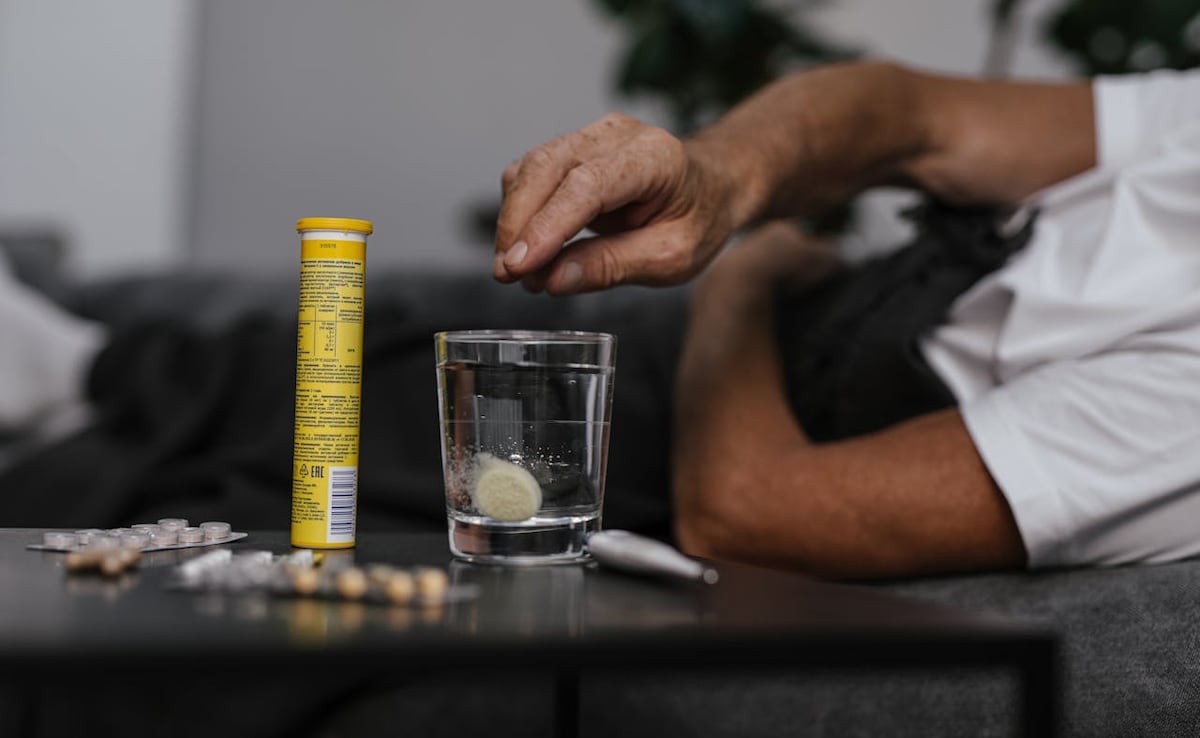
When most people hear "typhoid", they think of the high fever, stomach pain and a few weeks off work. But for many in India, the story doesn't end at the six-week mark. For Debanish Achom (Senior Editor, NDTV) for example, the initial bout of typhoid in August turned into an extended, exhausting ordeal that stretched far beyond the textbook recovery period. As he reflects: "It began as exhaustion. I thought it was just fatigue from work. But five days passed, and the tiredness refused to go away. That's when I noticed the nausea setting in." In his case, the diagnosis came only after he already had elevated liver enzymes and weeks of gut distress. And even when the bacteria did clear, his body, from digestion to smell sensitivity and energy levels, was still in recovery mode.
What is going on when typhoid morphs from an acute episode to a protracted decline? Why do patients continue to feel unwell, weak, queasy, low-on-appetite, long after the immediate infection is gone? In India, where sanitation challenges, antibiotic-resistant strains and delayed diagnoses still matter, understanding this "long tail" of typhoid is vital - perhaps just as much, if not more, as Long Covid.
Lived Experience: "The illness that wouldn't end"
Debanish recalls the diagnosis moment: "My doctor said typhoid was becoming very common this season, and my symptoms looked similar. He ordered a blood test. The next day, the report came back positive for Salmonella Typhi, the bacteria that causes typhoid fever." By then, he says, "I had already lost a precious week without diagnosis. My SGPT was over 400, when the normal level is below 50. The doctor explained that typhoid affects the liver and intestines the most."
Despite starting antibiotics, recovery was slow. "It was a constant battle between eating and throwing up," he explains. "f I didn't eat, I became weaker; if I did, I would throw up everything. None of it felt like a good choice." When treatment was changed and the infection cleared, the aftermath persisted: "Indigestion, fatigue, nausea - they all stayed. Going out was impossible. Even working from home was a struggle because the nausea came and went without warning."
He also reports something unusual: "My doctor mentioned that typhoid can affect the nervous system. I didn't believe it at first - until I started developing strange aversions to smell." His key takeaway: "It's better to check and rule out typhoid than to assume it's something minor. I learned that lesson the hard way."

Image used for representative purpose
Photo Credit: Pexels
Why These Prolonged Typhoid Symptoms Happen
According to Dr BN Singh (Additional Director, Internal Medicine, Fortis Hospital Faridabad), many patients who appear to have "recovered" from typhoid remain in a post-infectious or convalescent phase. He explains the causes behind this "long typhoid"-like scenario that patients like Debanish have experienced.
Gut and liver involvement
Dr Singh explains that "this is due to inflammation of the gut and spread to internal organs, which leads to prolonged fatigue, poor appetite, nausea, and altered digestion." That aligns with data showing that Salmonella Typhi can invade the intestinal lining and Peyer's patches, cause mucosal ulceration and disrupt the microbiome, which has downstream effects on digestion and metabolism.
Liver involvement is common. In some studies, up to 40-60% of typhoid cases show some hepatitis-type presentation. Elevated SGPT, bilirubin or hepatomegaly are not rare. In Debanish's case the SGPT of over 400 indicated significant hepatic stress. Singh notes that while typhoid hepatitis is typically self-limiting, "recovery may take weeks to months and patients may continue to experience poor appetite or mild jaundice."
The result? Even when the infection is off, the digestive system and metabolism are playing catch-up, which means slower bile secretion, impaired fat digestion, altered nutrient absorption. And the consequences are fatigue, weight loss, food intolerance and slow rebuilding.
Delay in diagnosis and impact
Delayed diagnosis is a key risk. A 2020 systematic review, published in the Journal of Infection, of typhoid complications found that in Asia, delays in care correlated strongly with higher complication rates. Dr Singh emphasises: "Delayed diagnosis allows the bacteria to multiply and invade deeper tissues, leading to higher fever peaks, more severe liver involvement, intestinal ulceration, and prolonged fatigue." Debanish's belief "... that one week made a world of difference" speaks to that reality.
Neurological or sensory effects
While less common, typhoid can trigger neurological involvement. Dr Singh suggests that in some recovering patients the lingering nausea or smell-sensitivity may be due to autonomic nervous system imbalance triggered by systemic inflammation: "Post-recovery smell sensitivity and nausea may result from autonomic nervous system imbalance, or spread of infection due to delayed or improper treatment." Thus, while it may not be the norm, the odd sensory aversion Debanish describes is biologically plausible.
Weight loss and fatigue
Catabolism during the acute illness, combined with poor appetite, nausea, vomiting and malabsorption, means weight loss is common. Debanish says, "I lost 15 kilos in two months. I'd trade those lost kilos for a healthy gut any day." Dr Singh explains: "Persistent fever, inflammation and poor appetite cause a catabolic state where intestinal inflammation impairs absorption. Recovery of lost weight may take 1-3 months depending on diet and gut healing."

Photo Credit: Pexels
What Can Recovering Typhoid Patients Do?
Dr Singh recommends the following recovery tips:
- Gradual ramp-up: Don't rush back into full work or exercise immediately. Dr Singh says: "Avoid rushing; your immune and metabolic systems need time."
- Diet and hydration: Start with light, easily digestible food, like rice gruel, dal water, curd, boiled vegetables. Gradually introduce soft proteins (eggs, fish, lentils) and small frequent meals. Avoid oily, spicy and processed foods. Hydration via coconut water, ORS, lemon water helps restore electrolyte balance.
- Gut microbiome repair: Broad-spectrum antibiotics disrupt gut flora. Use of probiotics and fermented foods (curd, buttermilk, kefir) support recovery. Dr Singh notes this is "very important as it contributes to post-infectious dyspepsia and bloating."
- Sleep and stress management: Good sleep and low stress help normalize immune/metabolic systems.
- Medical follow-up: If symptoms (fatigue, nausea, food aversion, smell changes) persist beyond 3-4 weeks, patients should consult a physician for evaluation, especially if there is unexplained weight loss, liver dysfunction or neurological symptoms.
- Prevention matters: For India, where waterborne transmission and antibiotic resistance are key concerns, building awareness of early signs, ensuring clean water/drainage, and vaccines (typhoid conjugate vaccines) remain integral.
Typhoid fever is more than a high-fever illness resolved by antibiotics. For patients like Debanish Achom, the journey stretches into months of weakened body, queasy gut, altered senses and slow recovery. The infection-to-recovery path in India is affected by delayed diagnosis, liver and gut involvement, disrupted microbiota, nutritional deficit and sometimes neurological sequelae. Recognising that the "after-typhoid" phase matters is vital for patients, families and clinicians alike. Be alert to the warning signs, seek timely diagnosis, allow the body to heal at its pace, prioritise diet, rest and gut repair. And remember, recovery is a process, not an event.
Disclaimer: This content including advice provides generic information only. It is in no way a substitute for a qualified medical opinion. Always consult a specialist or your own doctor for more information. NDTV does not claim responsibility for this information.
Track Latest News Live on NDTV.com and get news updates from India and around the world

